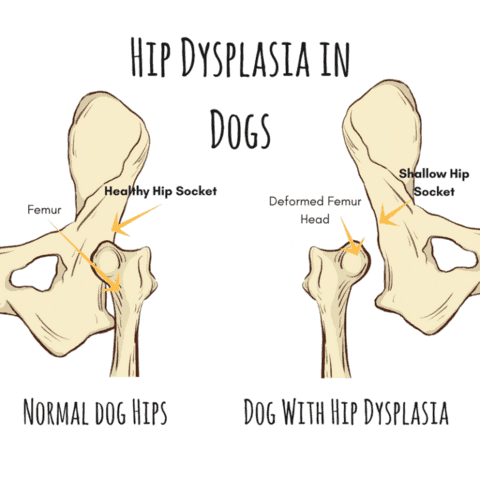There are some upsetting things about owning a dog that we just can’t avoid, and any issues with their health fall into that category.
Canine hip dysplasia is a common condition that dogs can develop and something that can have a serious impact on their quality of life and happiness.
As their owners, it’s our responsibility to do everything we can to educate ourselves on this condition but also to make life more enjoyable for the dogs that develop with.
A specialized dog ramp is one of the best ways to help them out, so if your pet has recently been diagnosed with hip dysplasia you’ll want to invest in one to make sure they’re getting the best of care.
What Is Canine Hip Dysplasia and What Breeds Suffer?
Canine hip dysplasia is a skeletal disease that commonly occurs in dogs.
The condition is related to your dog’s hip joints and can progress as these joints fail to develop correctly.
As a result, the hip partially dislocates which can be very painful and restrictive for dogs, leading to things like wearing of the joints or complete immobility when it’s in the serious stages.
There are some common causes of this skeletal disease, and according to the American Kennel Club, it’s usually found in larger breeds of dog like Golden Retrievers and Great Danes. Because the condition is hereditary, it’s passed down through each generation, and the body mass and physical makeup of these larger breeds make them more susceptible.
However, size isn’t the only indication that your dog will one day dysplasia, and smaller breeds have also been known to develop it over time.
Even if your dog isn’t at risk because of their breed or genetics, there are other environmental factors that come into play which you should be aware of.
Signs and Symptoms of Dog Hip Dysplasia

If you’ve never had a dog with hip dysplasia before, you might not even know where to begin looking for signs and symptoms.
Many dogs are diagnosed after a trip to the vet when their owner noticed them struggling with their regular movements, but there are some things you can look for yourself that could indicate a problem.
It’s important to know that the sooner you take action against this condition, the better the results will be.
Keeping an eye on your dog’s regular movements and taking them to the vet when you notice something different is a great way to ensure the condition doesn’t develop, as well as using other preventative treatments.
Treatment and Prevention

Unfortunately, because of the hereditary nature of this condition, there’s no real way to prevent the onset of hip dysplasia in dogs if they’re going to get it.
For dogs who develop it from environmental factors like poor diet and obesity, it’s the owner’s responsibility to ensure their pets are leading a healthy lifestyle with a balanced diet to try and reduce the effects.
Once your dog has been diagnosed by a vet, usually with the assistance of x-rays, there are various treatment methods. The best approach is to use a pet ramp, start them on a course of dietary supplements, and try to engage them in regular exercise. If the condition is beyond this point, your vet may suggest surgical options which include a total hip replacement.
How a Pet Ramp Can Help
One of the best treatments you can use for a dog with hip dysplasia is a pet ramp, and they’re surprisingly easy to use.
These ramps weren’t just designed with immobile dogs in mind, but they can also help owners lift pets, get into awkward spaces, and assist large and small dogs with accessibility. For dogs with hip dysplasia though, they offer the biggest benefit.
The regular movement for a dog using stairs or jumping into a car or up on the sofa requires a lot of work from their pelvis and hip.
If your dog is suffering from dysplasia, you’ve probably noticed that they’ve given up on these activities altogether because of the pain that it causes. Getting your dog into the car or up on their favorite chair could become a chore for both you and them.
A pet ramp gives them a stable, sloped surface to use for walking up and down as needed, and ensures they’re not putting too much pressure on their pelvis and hips.
Best of all, these ramps are totally portable so you can use them wherever your dog wants to go, and relieve a lot of this pressure and pain that they’ve been living with.
A Little Support Goes a Long Way
We want to do all that we can to take care of our four-legged friends, and when they develop a condition as immobilizing and painful as hip dysplasia it can be very hard to watch.
Thankfully, there are treatment options and help available that will relieve some of the pain for them, and a dog ramp is one of the easiest to implement.
There’s no way to avoid this skeletal condition in some dogs so whatever we can do to make life easier for them is essential.
With the right medical care, recommended supplements, and accessibility support like a ramp, your dog won’t have to suffer from the effects of this common canine condition and will be able to continue living their life to the fullest.

